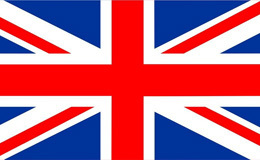See more categories+
02
2025
-
06
Understanding Digital 3 Phase Energy Meters: A Comprehensive Guide
Digital 3 Phase Energy Meters are crucial instruments in the field of electrical engineering, specifically designed to measure and monitor electrical energy consumption in three-phase systems. Their importance has surged with the increasing demand for efficient energy management and monitoring in both industrial and commercial applications. A Digital 3 Phase Energy Meter typically measures key pa
Author:
Digital 3 Phase Energy Meters are crucial instruments in the field of electrical engineering, specifically designed to measure and monitor electrical energy consumption in three-phase systems. Their importance has surged with the increasing demand for efficient energy management and monitoring in both industrial and commercial applications.
A Digital 3 Phase Energy Meter typically measures key parameters such as voltage, current, power factor, and energy consumption (in kilowatt-hours). These meters are essential for evaluating system efficiency and identifying potential energy savings. Unlike traditional analog meters, digital versions provide a more accurate and straightforward reading, often displaying data in real-time on an easy-to-read screen. This real-time monitoring capability allows for immediate adjustments, which can lead to better energy management.
One of the most significant advantages of using a Digital 3 Phase Energy Meter is their ability to facilitate advanced data analysis. Many modern digital meters are equipped with communication capabilities, allowing them to interface with energy management systems or software. This integration enables users to track consumption patterns, perform load analysis, and identify peak usage times, significantly contributing to operational efficiency.
Moreover, Digital 3 Phase Energy Meters often come equipped with features like programmable alarms and data logging. These functionalities help in proactive maintenance, enabling operators to address issues before they escalate into costly failures. The data logging feature can store historical data, which is invaluable for audits and compliance with energy regulations.
Installation and calibration of Digital 3 Phase Energy Meters are relatively straightforward, but it's crucial to ensure that they are correctly configured for the specific system in which they will be used. Proper installation not only guarantees accurate readings but also extends the lifespan of the meter. Professionals must consider factors such as the meter's voltage rating, current rating, and the type of connection (star or delta) based on the specific application.
In conclusion, understanding Digital 3 Phase Energy Meters is essential for professionals in the electrical industry. These meters play a vital role in enhancing energy efficiency, reducing operational costs, and ensuring compliance with energy regulations. By leveraging the advanced features and capabilities of these devices, businesses can achieve significant improvements in energy management and sustainability. The adoption of Digital 3 Phase Energy Meters is not just a technological upgrade; it's a strategic move towards more efficient energy utilization in an increasingly energy-conscious world.
A Digital 3 Phase Energy Meter typically measures key parameters such as voltage, current, power factor, and energy consumption (in kilowatt-hours). These meters are essential for evaluating system efficiency and identifying potential energy savings. Unlike traditional analog meters, digital versions provide a more accurate and straightforward reading, often displaying data in real-time on an easy-to-read screen. This real-time monitoring capability allows for immediate adjustments, which can lead to better energy management.
One of the most significant advantages of using a Digital 3 Phase Energy Meter is their ability to facilitate advanced data analysis. Many modern digital meters are equipped with communication capabilities, allowing them to interface with energy management systems or software. This integration enables users to track consumption patterns, perform load analysis, and identify peak usage times, significantly contributing to operational efficiency.
Moreover, Digital 3 Phase Energy Meters often come equipped with features like programmable alarms and data logging. These functionalities help in proactive maintenance, enabling operators to address issues before they escalate into costly failures. The data logging feature can store historical data, which is invaluable for audits and compliance with energy regulations.
Installation and calibration of Digital 3 Phase Energy Meters are relatively straightforward, but it's crucial to ensure that they are correctly configured for the specific system in which they will be used. Proper installation not only guarantees accurate readings but also extends the lifespan of the meter. Professionals must consider factors such as the meter's voltage rating, current rating, and the type of connection (star or delta) based on the specific application.
In conclusion, understanding Digital 3 Phase Energy Meters is essential for professionals in the electrical industry. These meters play a vital role in enhancing energy efficiency, reducing operational costs, and ensuring compliance with energy regulations. By leveraging the advanced features and capabilities of these devices, businesses can achieve significant improvements in energy management and sustainability. The adoption of Digital 3 Phase Energy Meters is not just a technological upgrade; it's a strategic move towards more efficient energy utilization in an increasingly energy-conscious world.
Key words:
Related news


![[object Object] [object Object]](https://omo-oss-image.thefastimg.com/portal-saas/new2023080419495759710/cms/image/138ba837-b50d-4ff3-a73c-2e6a2379c522.jpg)







